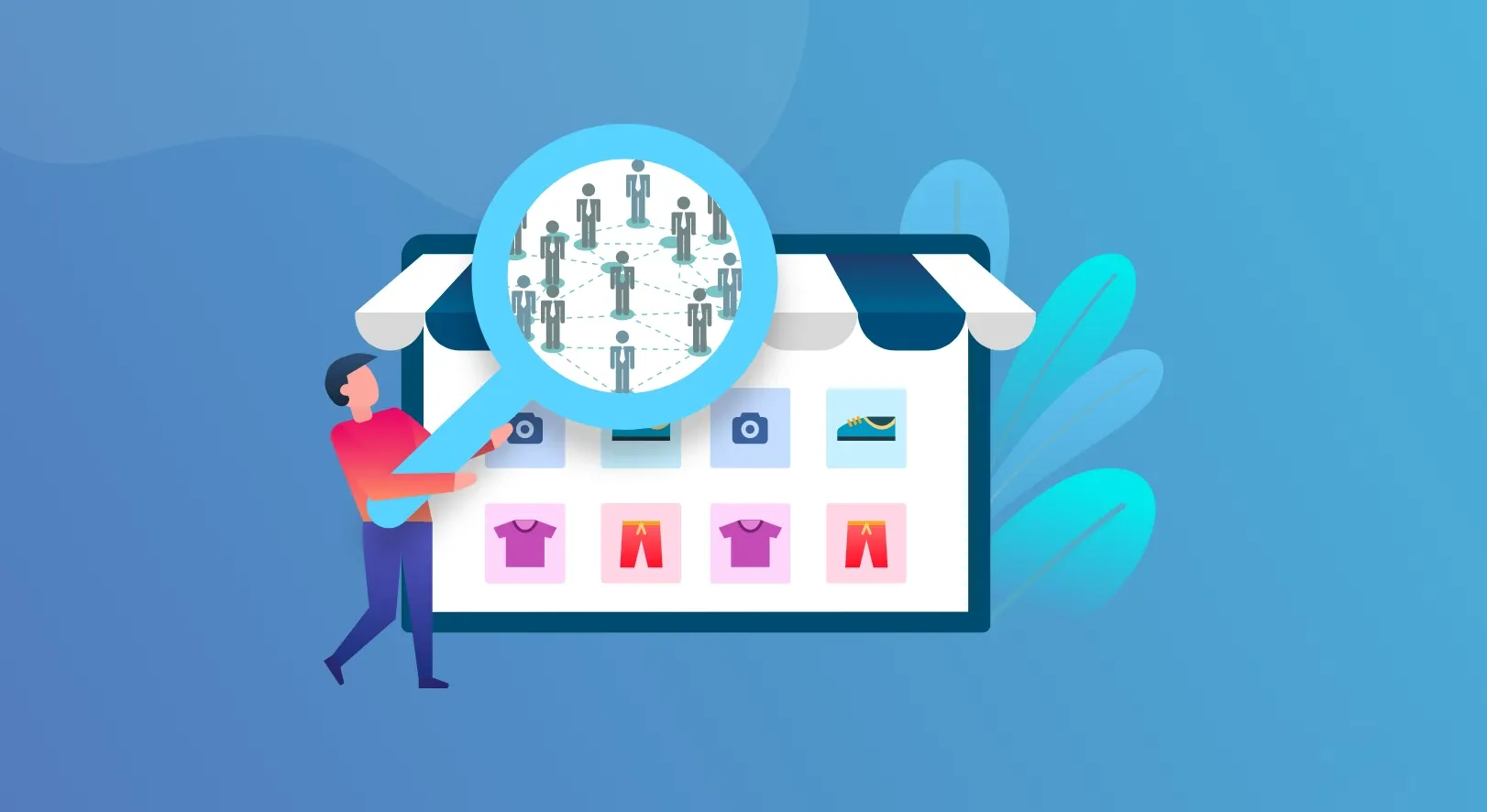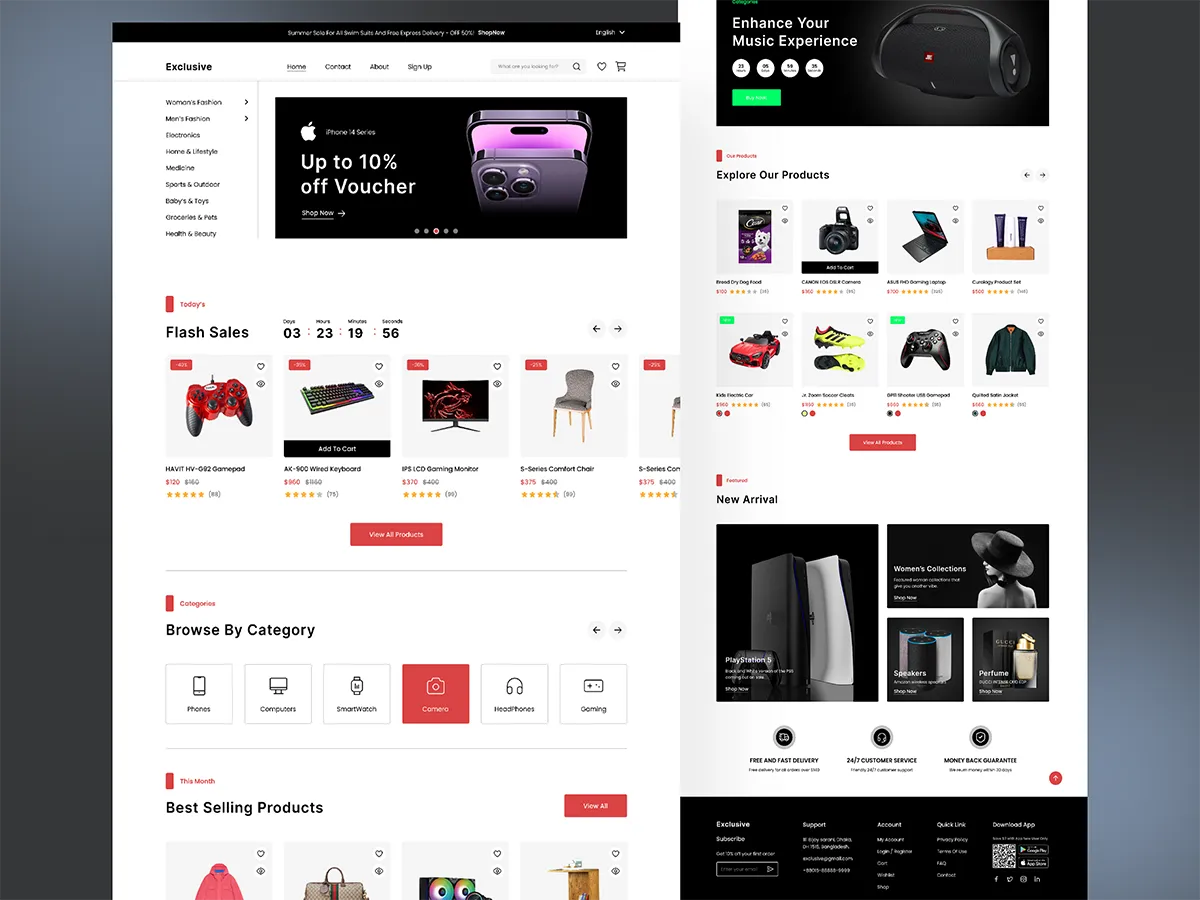E-commerce Empire? How to Launch Your Online Business in 2024
Dreaming of being your own boss and building a business from the ground up? The world of e-commerce might be your golden ticket! Imagine selling products you’re passionate about, reaching customers worldwide, and being in charge of your own destiny. Sound pretty epic, right?
But before you grab your virtual shopping cart and race out the door, let’s take a quick pit stop to understand what e-commerce is all about. Think of it as your business compass, guiding you towards building a successful online store.
E-commerce Explained in Plain English
E-commerce, short for electronic commerce, is basically buying and selling stuff online. It’s like having a virtual store open 24/7, accessible to customers all over the globe. From trendy fashion finds to handcrafted pottery (or even pet rock collections – hey, no judgment!), almost anything can be sold online.
Why Should You Start an E-commerce Business?
Here’s the exciting part: there are a ton of reasons why e-commerce might be the perfect path for you! Let’s peek at a few:
- Be Your Own Boss: Tired of the 9-to-5 grind? E-commerce gives you the freedom and flexibility to be your own boss. Set your own hours, work from anywhere with an internet connection, and be the captain of your entrepreneurial ship.
- Global Reach: Forget geographical limitations! With an e-commerce store, you can sell your products to customers across the country, or even the entire world. Think of it as having a storefront on every corner of the planet (virtually, of course!).
- Low Start-up Costs: Compared to traditional brick-and-mortar stores, e-commerce businesses typically require less upfront investment. This means you can get started with a smaller budget and scale up as your business grows.
- Endless Possibilities: The beauty of e-commerce is its flexibility. You can sell anything you can imagine, from physical products to digital downloads or even subscription boxes. The only limit is your creativity!
So, are you ready to turn your entrepreneurial dreams into a thriving online business? Buckle up, because in the next section, we’ll dive into market research and planning, the foundation of any successful e-commerce journey!

Market Mavens: Researching Your Way to E-commerce Success
Finding Your Niche: The Golden Ticket to Standing Out
Competition Check: Knowing Your Fellow E-commerce Adventurers
Market Research: Unearthing Customer Gems

Charting Your Course: Crafting a Winning E-commerce Business Plan
Defining Your Business Model: The Foundation of Your E-commerce Empire
Setting Goals and Objectives: Setting Your Sights on E-commerce Success
Budgeting and Financial Planning: Keeping Your E-commerce Business Afloat

Level Up: Legal and Regulatory Essentials for E-commerce Success

Choosing Your E-commerce Platform: Building the Perfect Home for Your Online Store
Popular E-commerce Platforms and Their Strengths
- Shopify: Renowned for its user-friendly interface and vast app store, Shopify caters to both beginners and established businesses. It boasts a drag-and-drop store builder, built-in marketing tools, and seamless integration with various payment gateways. However, its pricing structure can become expensive for high-volume stores.
- WooCommerce: This free, open-source plugin transforms your existing WordPress website into a fully functional e-commerce store. WooCommerce offers a high degree of customization, allowing you to tailor your online store to your exact vision. The downside? It requires some technical knowledge for setup and maintenance.
- Magento: A powerful and scalable platform ideal for complex online stores with a large product catalog. Magento offers advanced features for inventory management, SEO optimization, and customization. However, its complexity necessitates significant development expertise and resources, making it a less suitable option for beginners.
Beyond the Big Three: Exploring Additional Options
While Shopify, WooCommerce, and Magento are industry leaders, a multitude of other platforms cater to specific needs and budgets. Here are a few to consider:
- BigCommerce: Similar to Shopify in functionality and ease of use, BigCommerce offers built-in features for SEO and omnichannel selling, making it a strong contender for mid-sized businesses.
- Wix E-commerce: If you prioritise a user-friendly website builder and have a smaller product catalogue, Wix E-commerce could be a good option. While it may not offer the same level of scalability as other platforms, it’s a cost-effective solution for businesses just starting out.
- Squarespace Commerce: Another user-friendly platform, Squarespace Commerce offers beautiful templates and integrates seamlessly with other Squarespace products for a cohesive brand experience.
Choosing Your Perfect Match: Key Considerations
Beyond the platform itself, here are some crucial factors to weigh in your decision:
- Features and Functionality: Does the platform offer the essential features you need to manage products, orders, shipping, and customer interactions? Make a list of your must-have features and compare them against each platform’s offerings.
- Ease of Use: Consider your technical comfort level. While some platforms boast drag-and-drop interfaces, others require coding knowledge. Choose a platform that aligns with your technical expertise.
- Scalability: Will the platform be able to grow with your business? Consider factors like product volume, customer base expansion, and future functionality needs.
- Pricing: Understand the platform’s pricing structure, including monthly fees, transaction costs, and any additional charges for apps or integrations. Compare pricing across different platforms to find the most cost-effective option for your budget.
- Security: Ensure the platform prioritizes data security and PCI compliance to safeguard customer information.
- Customer Support: Reliable customer support is crucial for troubleshooting issues and getting assistance as needed. Evaluate the platform’s customer support options.
Making the Final Choice
Remember, there’s no one-size-fits-all solution. Take advantage of free trials or demos offered by many platforms to test-drive their features and get a feel for their interface. Don’t hesitate to research user reviews and compare pricing models before making your final decision.
The next section will delve into the exciting process of building your online store, where we’ll explore design, product addition, and crafting a user-friendly experience to convert visitors into loyal customers!

Building Your Online Store: A Customer-Centric Haven
Design for User Experience (UX): Frictionless Navigation is Key
Think of your website’s design as a welcoming handshake to your customers. It should be visually appealing, of course, but also user-friendly and optimised for smooth navigation. Imagine guiding your visitors through your store – avoid clutter and overwhelming visuals. Use white space effectively to create a sense of balance and guide the user’s eye towards important elements, like product listings and clear calls to action (CTAs). Speaking of CTAs, these are your friendly prompts telling visitors what you want them to do – tell them in clear, concise language with contrasting colours that stand out. And finally, remember that a significant portion of online traffic comes from mobile devices. Ensure your website displays flawlessly and functions seamlessly across all devices, from desktops to tablets to smartphones.
Building Trust and Confidence: Creating a Secure and Reliable Online Environment
Before diving into product descriptions and checkout processes, let’s address a crucial element: building trust and confidence with your customers. In the digital world, where security concerns can sometimes linger, establishing yourself as a reliable and trustworthy business is paramount. Here are some key ways to achieve this:
- Security Seals and Certifications: Display prominent security seals and logos from trusted organizations like VeriSign or McAfee to assure customers that your website is secure and protects their financial information.
- Clear and Transparent Policies: Make your return policy, shipping information, and privacy policy readily accessible on your website. Customers appreciate transparency, and knowing their rights builds trust.
- Positive Customer Reviews and Testimonials: Showcase positive customer reviews and testimonials throughout your website. Social proof is a powerful tool that can influence buying decisions.
Adding Products and Compelling Content: Showcase Value and Build Trust
High-quality product images are like inviting window displays in the online world. Don’t skimp on product photography – include high-resolution images that showcase your products from multiple angles. Think close-ups to highlight details and lifestyle shots to demonstrate how the product can be used in real-life scenarios. Let’s move beyond those basic descriptions, though. Craft engaging product descriptions that tell a story. Highlight the benefits of your product, address any potential customer concerns, and use persuasive language that focuses on the value proposition – how will this product improve the customer’s life?
Remember, content is king (and queen!) in the e-commerce world. Content marketing is a powerful tool for attracting customers and establishing your brand as an authority in your niche. Create informative blog posts, helpful guides, and engaging social media content that resonates with your target audience.

Setting Up Payment Gateways and Shipping: The Nuts and Bolts of Delivery
Integrating Secure Payment Gateways
- Choosing the Right Gateway: Payment gateways act as secure intermediaries between your store and your customers’ financial institutions. Popular options include PayPal, Stripe, and Authorize.net. Consider factors like transaction fees, supported payment methods, and ease of integration when making your choice.
- Seamless Checkout Integration: Ensure a smooth checkout process where customers can easily enter their payment information without leaving your website. Most e-commerce platforms offer seamless integration with popular payment gateways.
Offering Multiple Shipping Methods
- Catering to Customer Preferences: Provide a variety of shipping options to cater to different customer needs and budgets. Consider standard shipping, expedited shipping, and potentially even international shipping options depending on your product and target market.
- Transparent Shipping Costs: Be upfront about shipping costs. Display estimated delivery times and shipping costs clearly at checkout to avoid any surprises for your customers.
- Fulfilment Options: Decide on a fulfilment strategy. Will you handle packaging and shipping yourself, or outsource it to a fulfilment centre? Consider factors like order volume, storage space, and budget when making this decision.
Implementing Order Fulfilment Processes
- Inventory Management: Maintain accurate inventory levels to avoid overselling and disappointing customers. Invest in a good inventory management system to track stock levels and avoid order fulfilment delays.
- Packaging and Shipping: Ensure your products are packaged securely to prevent damage during transit. Consider using eco-friendly packaging materials whenever possible to appeal to environmentally conscious customers.
- Order Tracking: Offer order tracking options so customers can easily monitor the status of their purchases. This transparency builds trust and reduces customer inquiries.
By establishing secure payment gateways, offering a variety of shipping options, and implementing efficient fulfilment processes, you’ll ensure a smooth and positive experience for your customers, which is crucial for building customer loyalty and repeat business.
In the next section, we’ll delve into the exciting world of marketing and promotion – the strategies to get your online store discovered and attract those eager customers!

Marketing and Promotion: Spreading the Word About Your E-commerce Empire
Developing a Marketing Strategy: Tailoring Your Approach for Success
Before diving headfirst into social media campaigns or crafting email newsletters, it’s crucial to develop a marketing strategy. Think of it as your roadmap, outlining your goals, target audience, and the channels you’ll use to reach them. Here are some key elements to consider:
- Identifying Your Target Audience: Who are you trying to reach? Understanding your ideal customer’s demographics, interests, and online behaviour is crucial for crafting targeted marketing messages.
- Setting SMART Marketing Goals: Define your marketing goals using the SMART framework – Specific, Measurable, Achievable, Relevant, and Time-bound. Do you want to increase website traffic by 20% in the next 3 months? Boost brand awareness through social media engagement? Set clear goals to track your progress and measure your marketing success.
- Choosing the Right Marketing Channels: The online marketing landscape offers a vast array of channels. Consider social media marketing, search engine optimisation (SEO), content marketing, email marketing, and even paid advertising options, depending on your budget and target audience.
Utilising Social Media and Content Marketing: Engaging Your Audience
Social media platforms are powerful tools for connecting with your target audience, building brand awareness, and driving traffic to your online store. Here are some ways to leverage social media effectively:
- Create Engaging Content: Share visually appealing images, informative videos, and engaging posts that resonate with your target audience. Don’t just promote your products – provide valuable content, establish yourself as an authority in your niche, and foster a community around your brand.
- Run Social Media Contests and Giveaways: Generate excitement and encourage engagement with contests and giveaways. Offer free products or discounts as prizes to incentivise participation and spread the word about your store.
- Utilise Paid Advertising: Consider paid advertising options on social media platforms to reach a wider audience and target specific demographics or interests.
Content marketing is another powerful tool for attracting customers and establishing yourself as a thought leader in your niche. Here are some content marketing strategies you can implement:
- Create a Blog: Publish informative and engaging blog posts that address your target audience’s needs and interests. Offer helpful tips, industry insights, and showcase your expertise through valuable content.
- Develop White Papers and eBooks: Offer downloadable resources like white papers or eBooks in exchange for email addresses. This is a great way to capture leads and nurture potential customers.
Implementing SEO Tactics: Getting Found Organically
Search engine optimisation (SEO) is the art of improving your website’s ranking in search engine results pages (SERPs). The higher your ranking, the more likely customers are to discover your online store. Here are some basic SEO tactics to get you started:
- Keyword Research: Identify relevant keywords that your target audience is searching for and incorporate them naturally into your website content.
- Optimise Product Descriptions and Page Titles: Include relevant keywords in your product descriptions and page titles to improve search engine visibility.
- Build High-Quality Backlinks: Encourage other websites to link back to your content. Backlinks are like votes of confidence in the eyes of search engines and can significantly improve your website’s ranking.
By implementing a combination of social media marketing, content marketing, and SEO tactics, you’ll attract organic traffic to your online store and convert those visitors into paying customers. In the next section, we’ll explore the art of providing exceptional customer service – the key to building customer loyalty and fostering a thriving e-commerce business.

Delivering Stellar Customer Service: Building Loyalty and Trust
Creating a Customer-Centric Culture
- Prioritise Empathy and Understanding: Train your customer service team to approach interactions with empathy and a genuine desire to help. Actively listen to customer concerns, acknowledge their frustrations, and work towards solutions that leave them feeling valued.
- Respond Promptly and Professionally: Timely responses are crucial. Set clear response time expectations and strive to answer customer inquiries as quickly as possible, across all communication channels (phone, email, social media).
- Proactive Communication: Don’t wait for customers to reach out with issues. Provide proactive communication throughout the buying journey. Send order confirmation emails, shipping notifications, and even track order inquiries to keep customers informed.
Building Trust Through Transparency and Flexibility
- Clear Return and Exchange Policies: Make your return and exchange policies readily available on your website. Outline the process clearly and be transparent about any conditions or limitations. A fair and hassle-free return policy fosters trust and encourages customers to purchase with confidence.
- Go the Extra Mile: While meeting customer expectations is essential, exceeding them can create lasting impressions. Consider offering surprise upgrades, personalised recommendations, or loyalty programs to reward repeat customers. These small gestures can go a long way in building brand loyalty.
Utilising Technology for Enhanced Service
- Live Chat Support: Offer live chat functionality on your website to provide real-time customer support. This allows customers to get immediate answers to their questions and can significantly improve the customer experience.
- Self-Service Options: Implement a comprehensive FAQ (Frequently Asked Questions) section on your website. This empowers customers to find answers to common questions independently and reduces the strain on your customer service team.
- Customer Reviews and Feedback: Encourage customer reviews and actively solicit feedback. Positive reviews build trust with potential customers, while negative feedback offers valuable insights for improvement. Address negative reviews promptly and professionally, demonstrating your commitment to customer satisfaction.
By prioritising customer service, building trust through transparency, and leveraging technology to enhance your service offerings, you’ll create a loyal customer base and foster a thriving e-commerce business. This concludes our exploration of building a successful e-commerce business! Do you have any questions about the topics we’ve covered?

Congratulations! You've Built the Blueprint for E-commerce Success
The e-commerce landscape may seem vast, but with this comprehensive guide as your compass, you’re well-equipped to navigate the exciting journey of building a thriving online store. Remember, the key to success lies in meticulous planning, a customer-centric approach, and a willingness to adapt and learn as your business evolves.
Here's a quick recap of the valuable knowledge you've acquired
- Identifying your niche and target audience – Understanding your market ensures you cater to the right customers with the right products.
- Crafting a winning business plan – Setting clear goals, outlining your budget, and establishing a legal foundation are essential for smooth operation.
- Choosing the perfect e-commerce platform – Your platform is the home of your online store, so pick one that aligns with your needs and offers the features you require.
- Building a user-friendly and visually appealing online store – A seamless user experience and clear product information are crucial for converting visitors into customers.
- Integrating secure payment gateways and reliable shipping options – Customers expect a smooth and secure checkout process, along with transparent shipping information.
- Developing a marketing strategy and implementing key tactics – Attract customers through social media engagement, content marketing, and effective SEO practices.
- Prioritizing exceptional customer service – Building trust and fostering loyalty relies on prompt, professional, and helpful customer service interactions.
This guide has equipped you with the essential tools to launch your e-commerce adventure. Remember, the journey is just as important as the destination. Embrace the learning process, adapt to new challenges, and celebrate your achievements along the way. The world of e-commerce is brimming with potential, and with your dedication and the knowledge you’ve gained, your online store is poised for success.
Now, go forth and conquer the e-commerce world! But don’t hesitate to revisit this guide or seek out additional resources as you navigate your entrepreneurial path. The world of e-commerce is constantly evolving, and staying informed will keep you ahead of the curve. Best of luck in your exciting endeavors!






